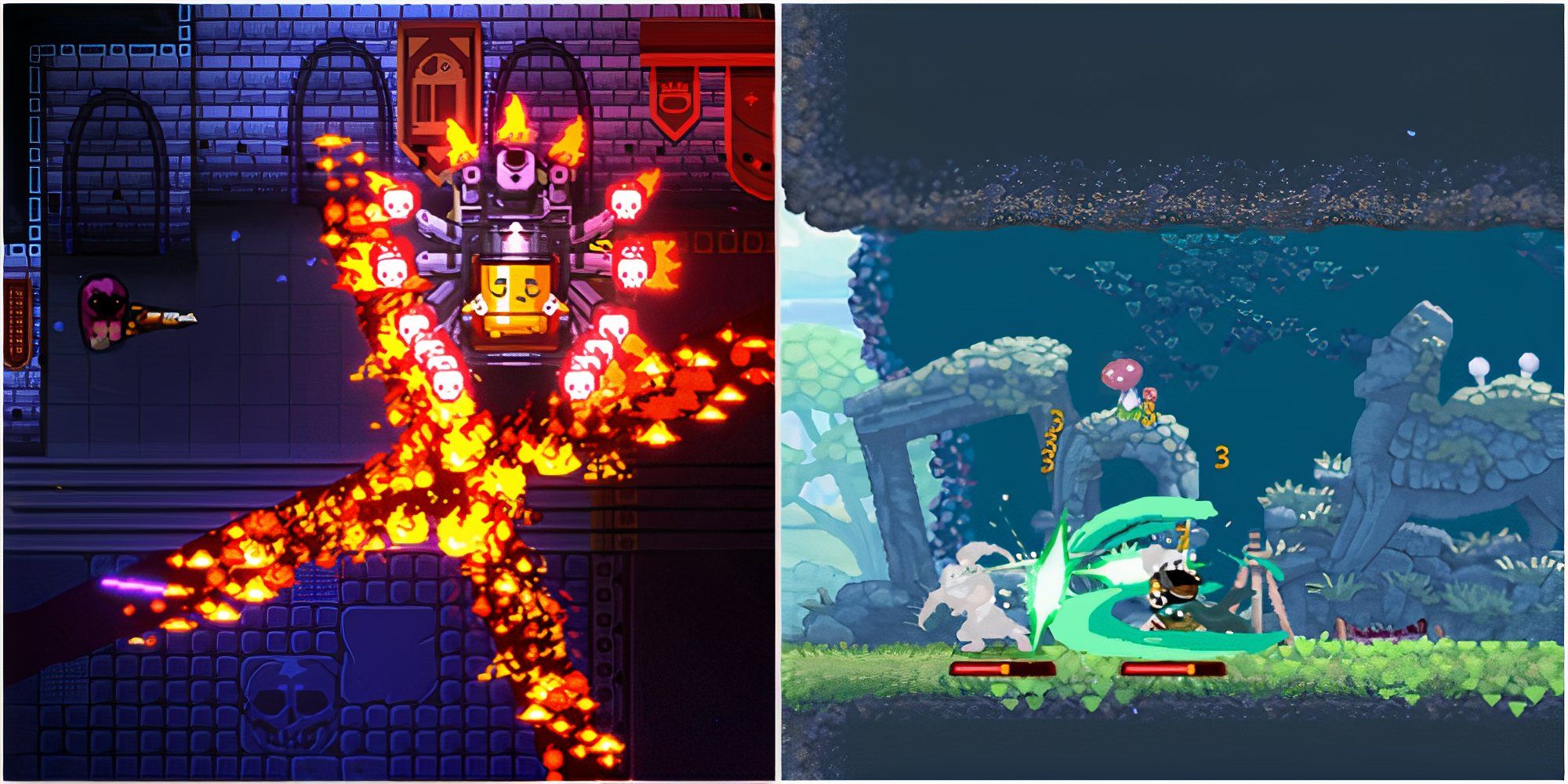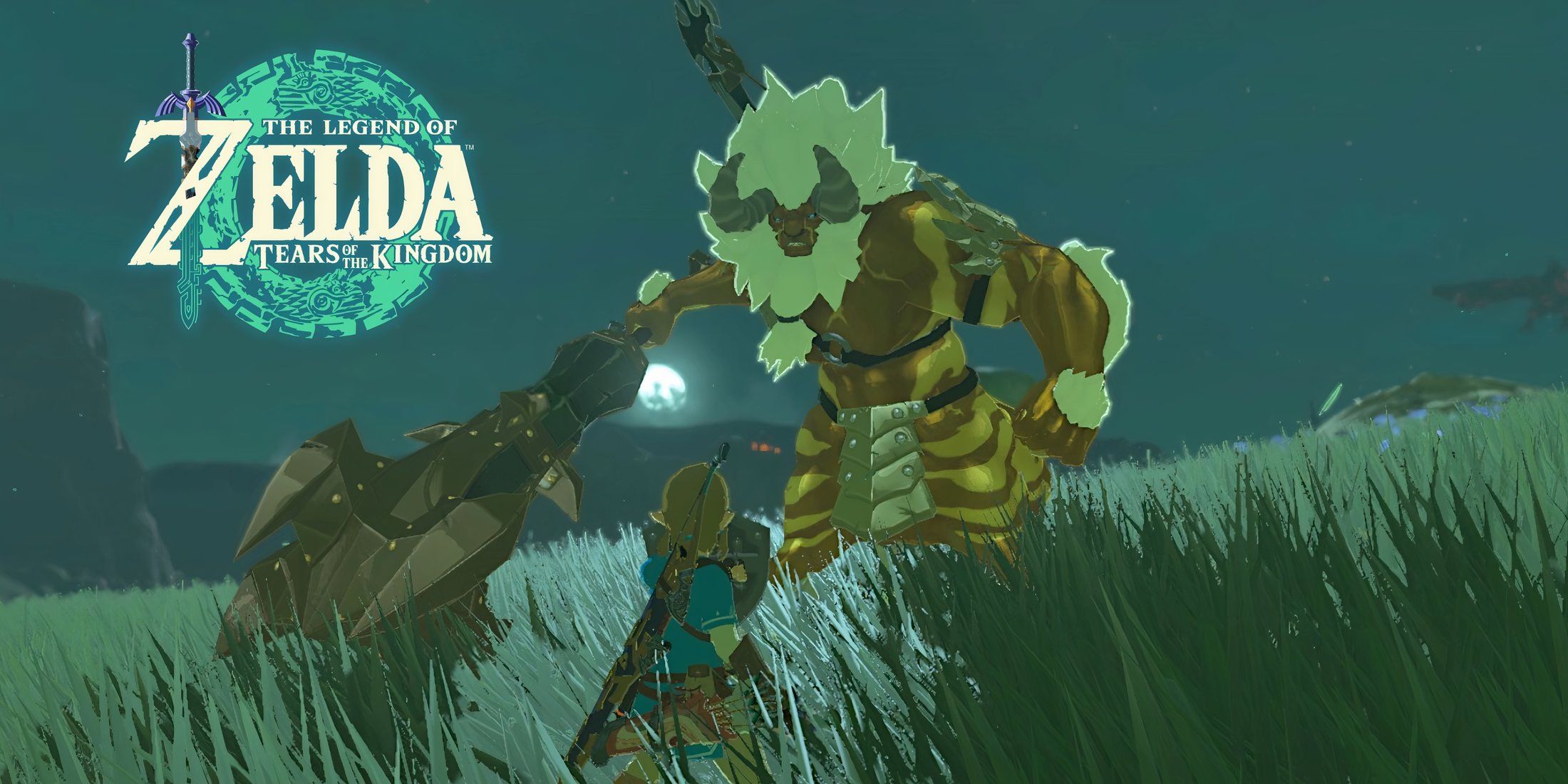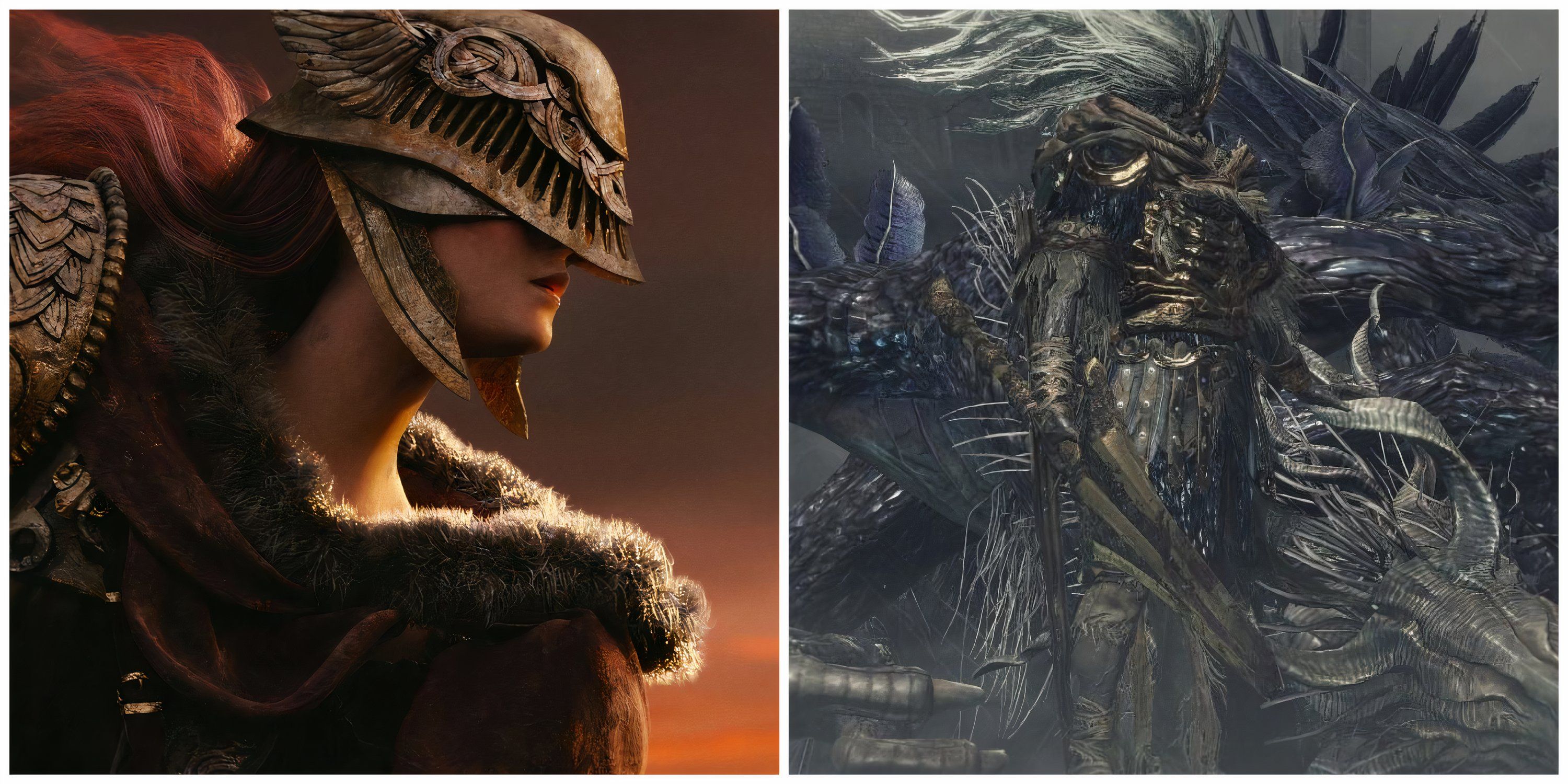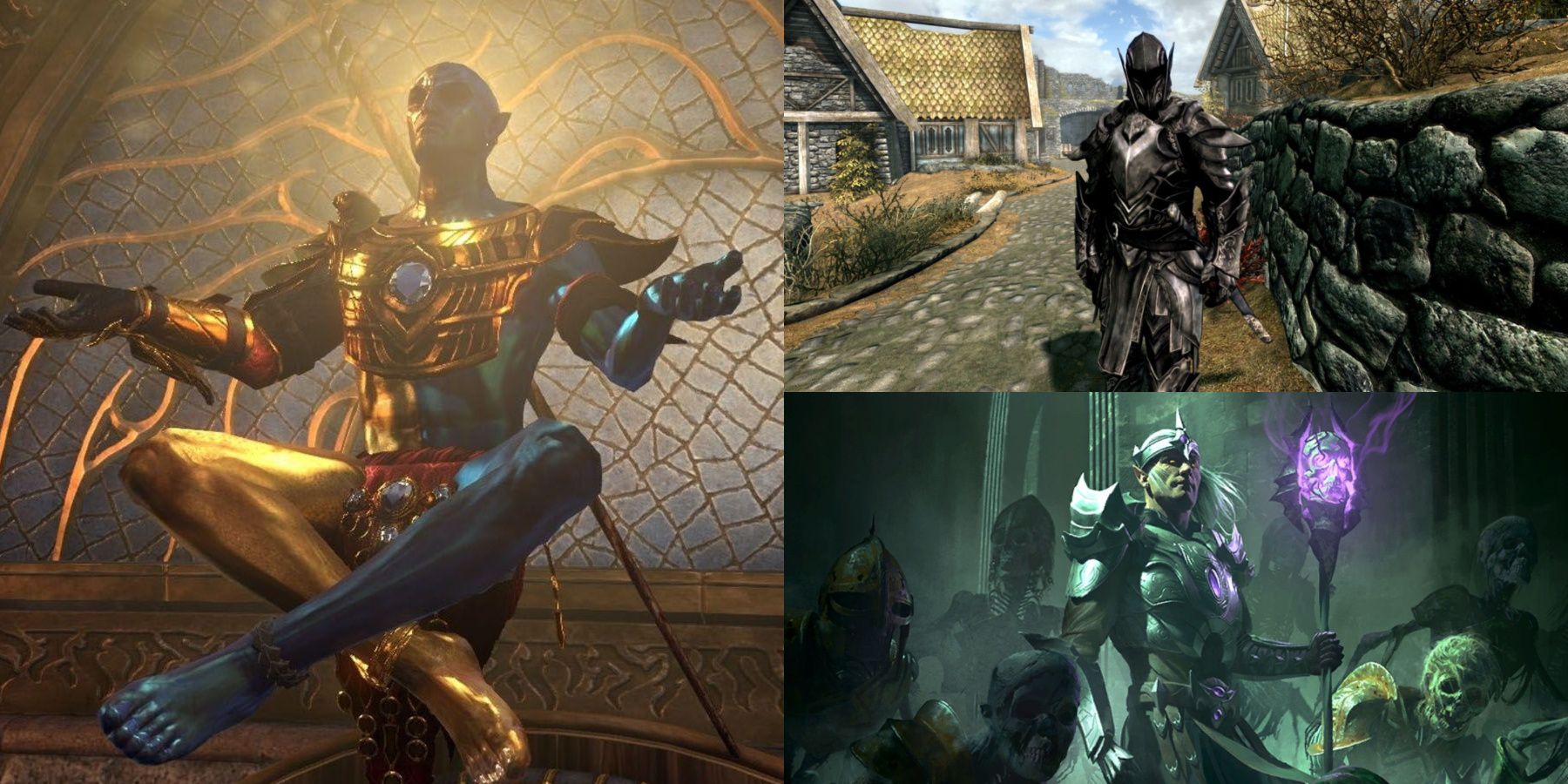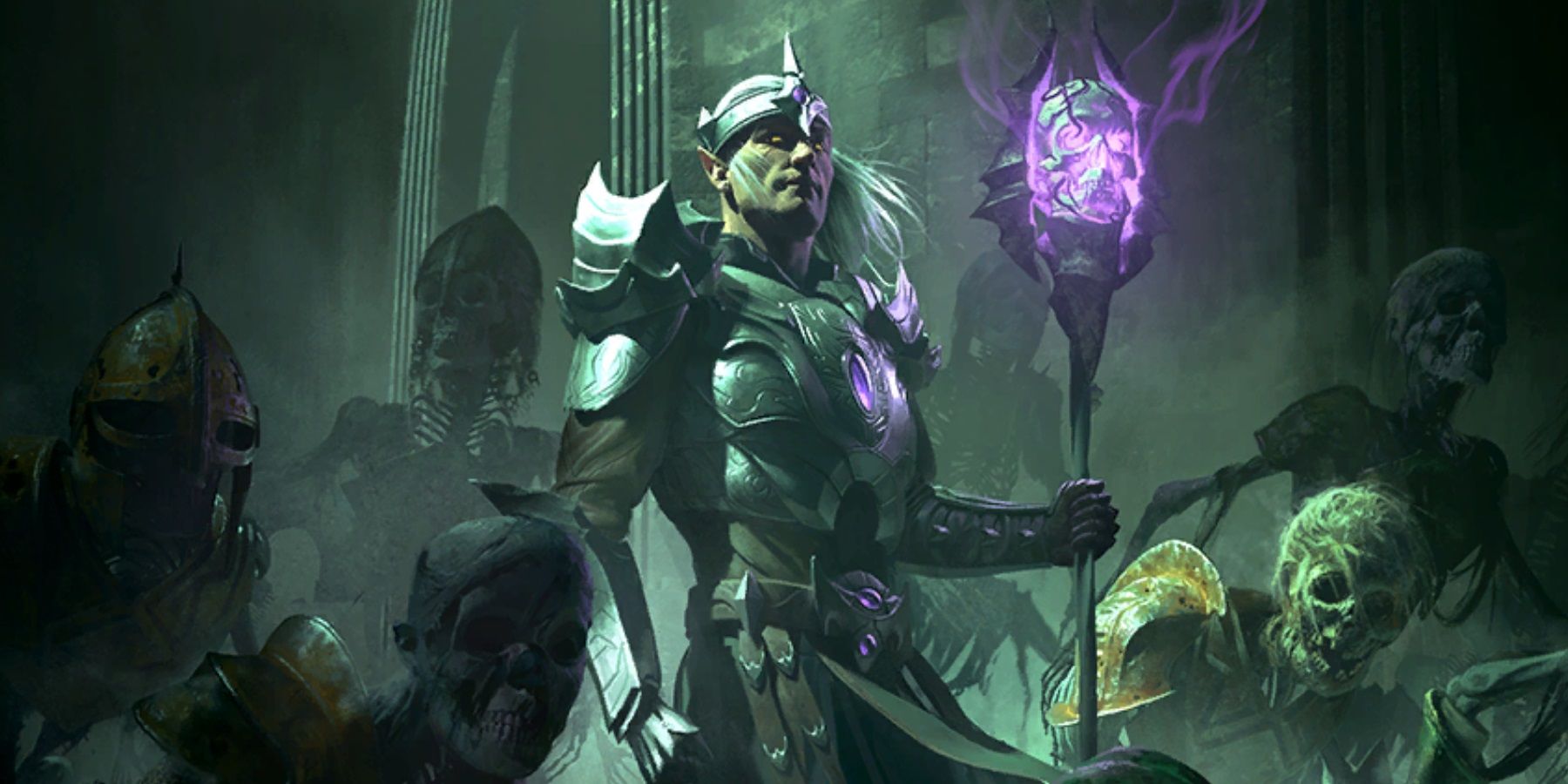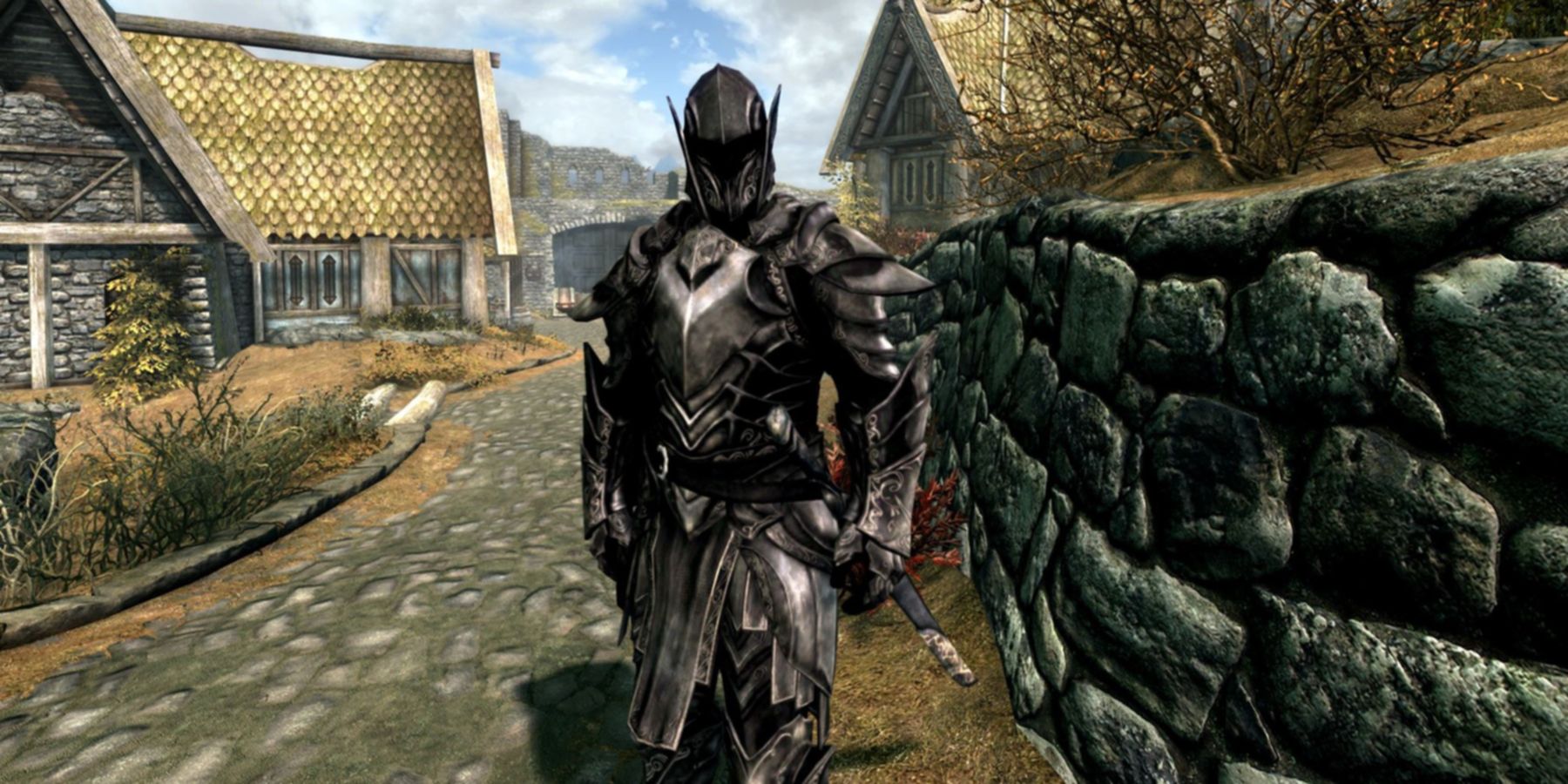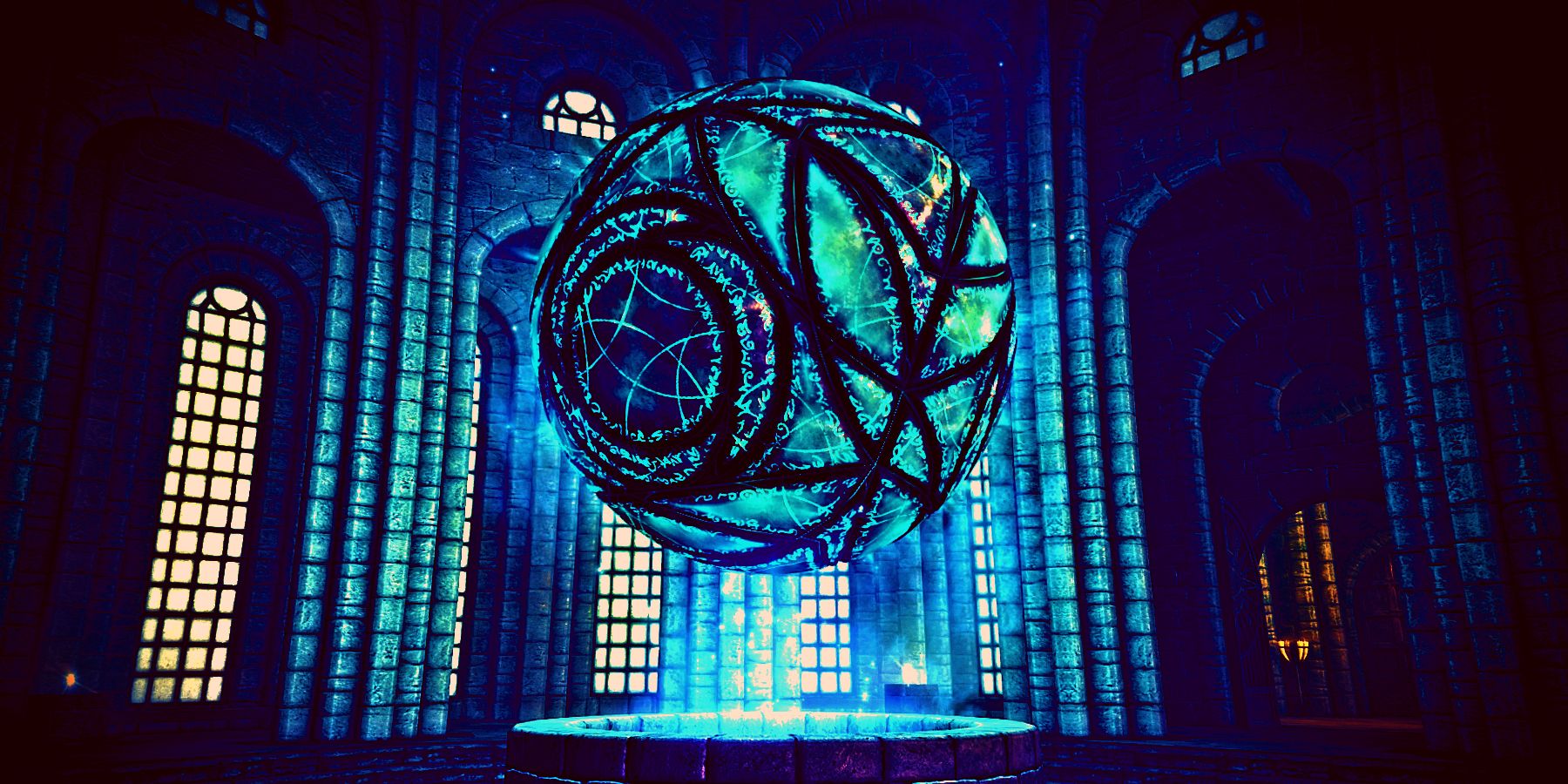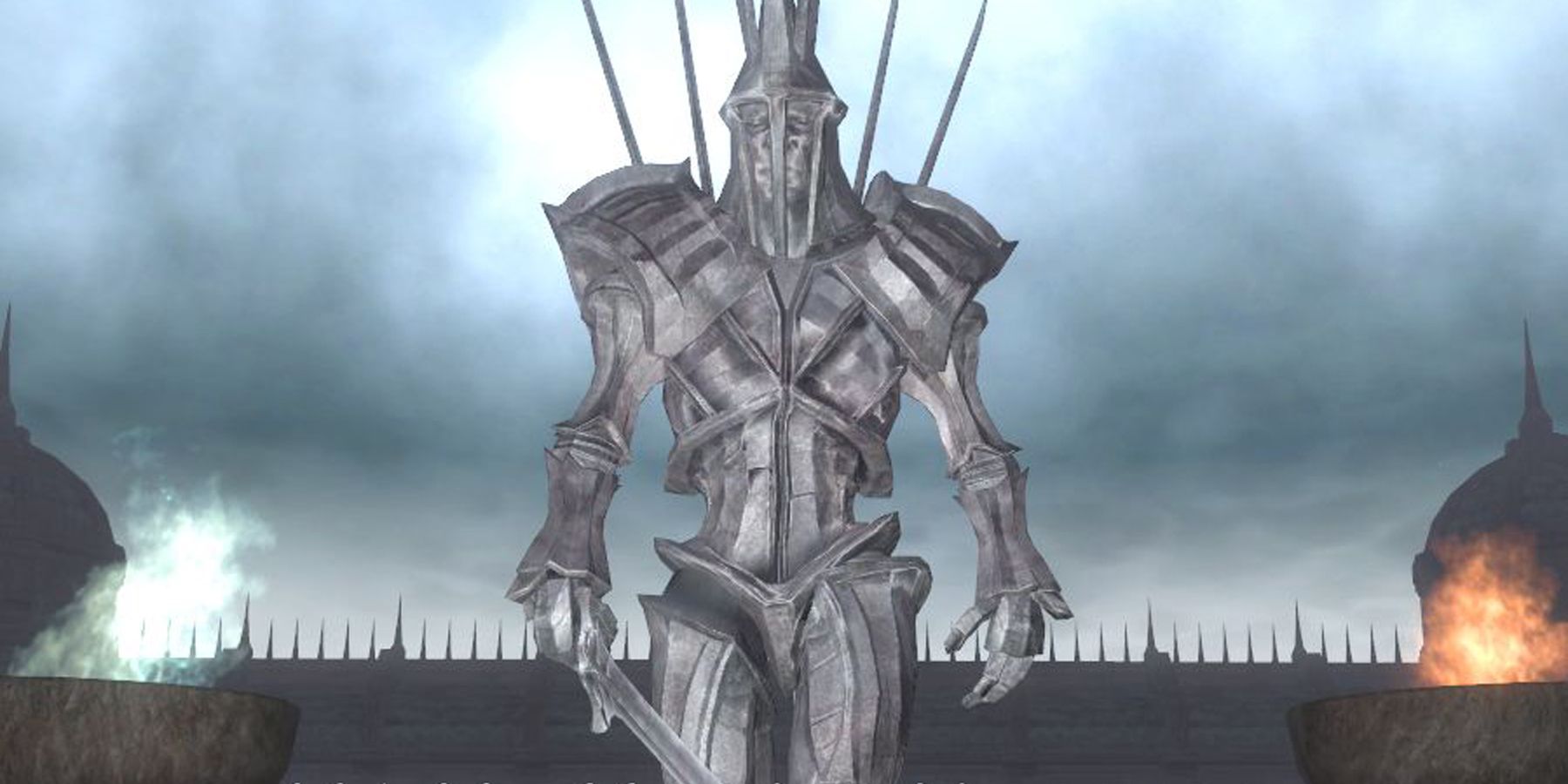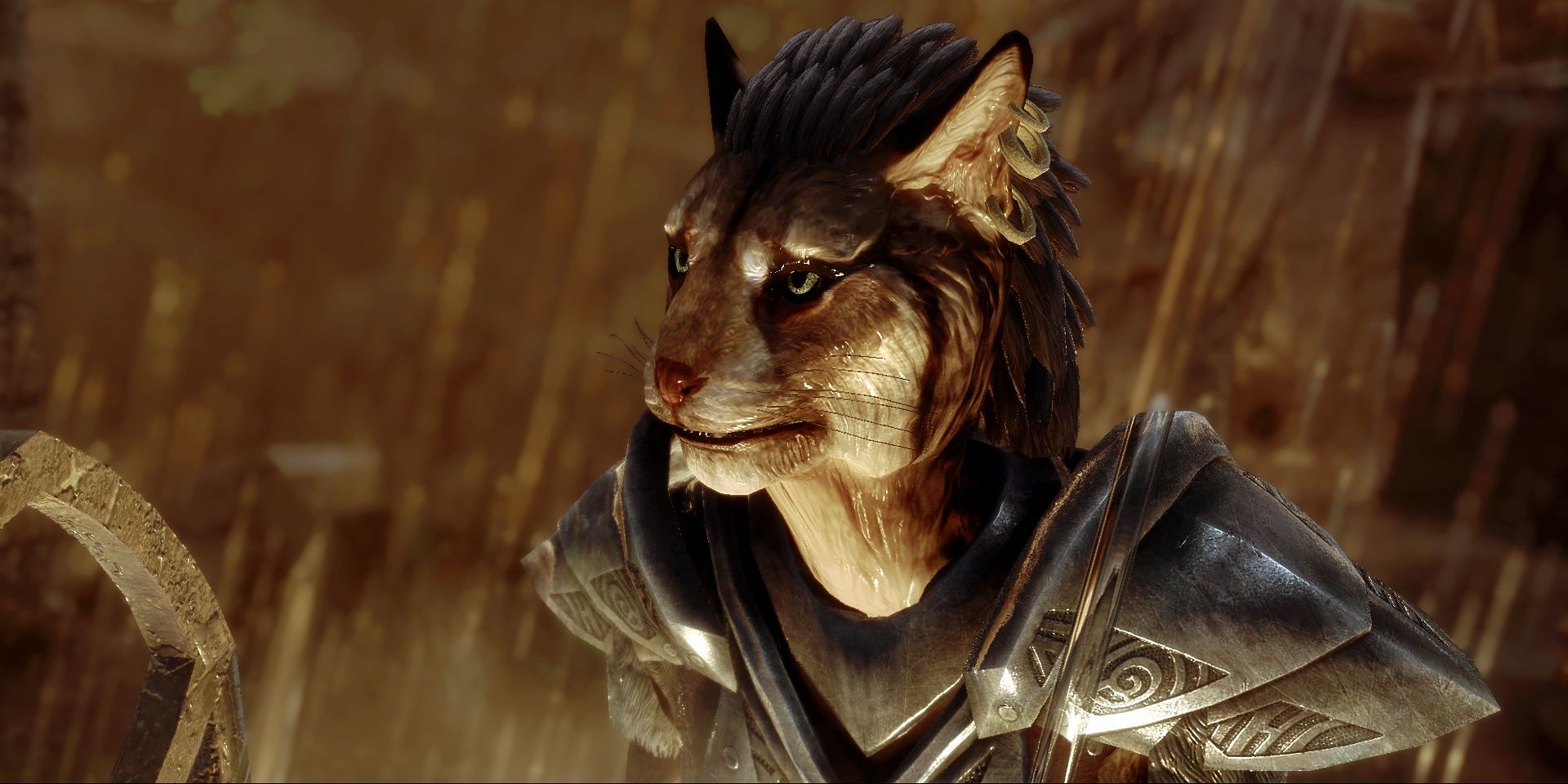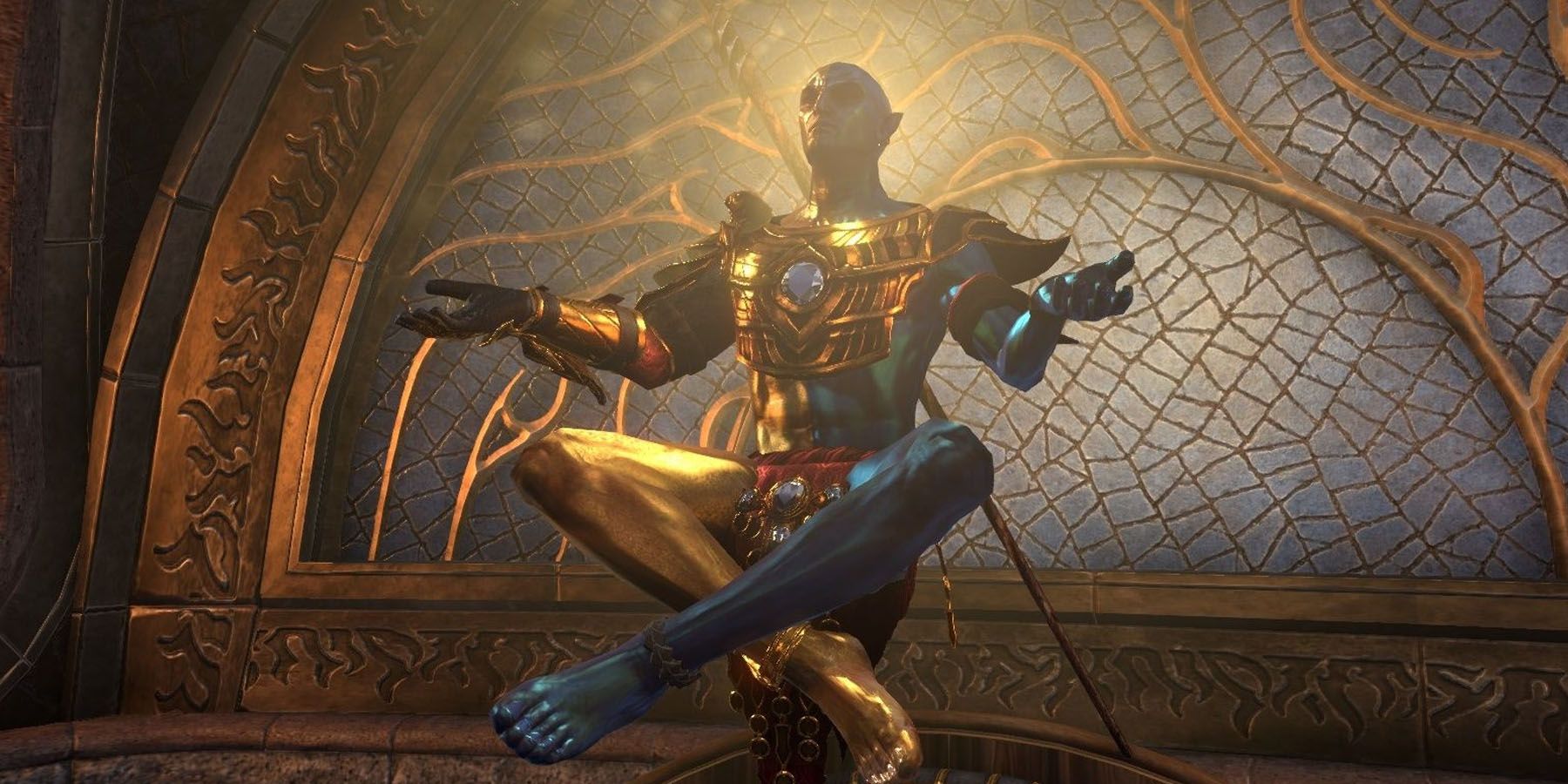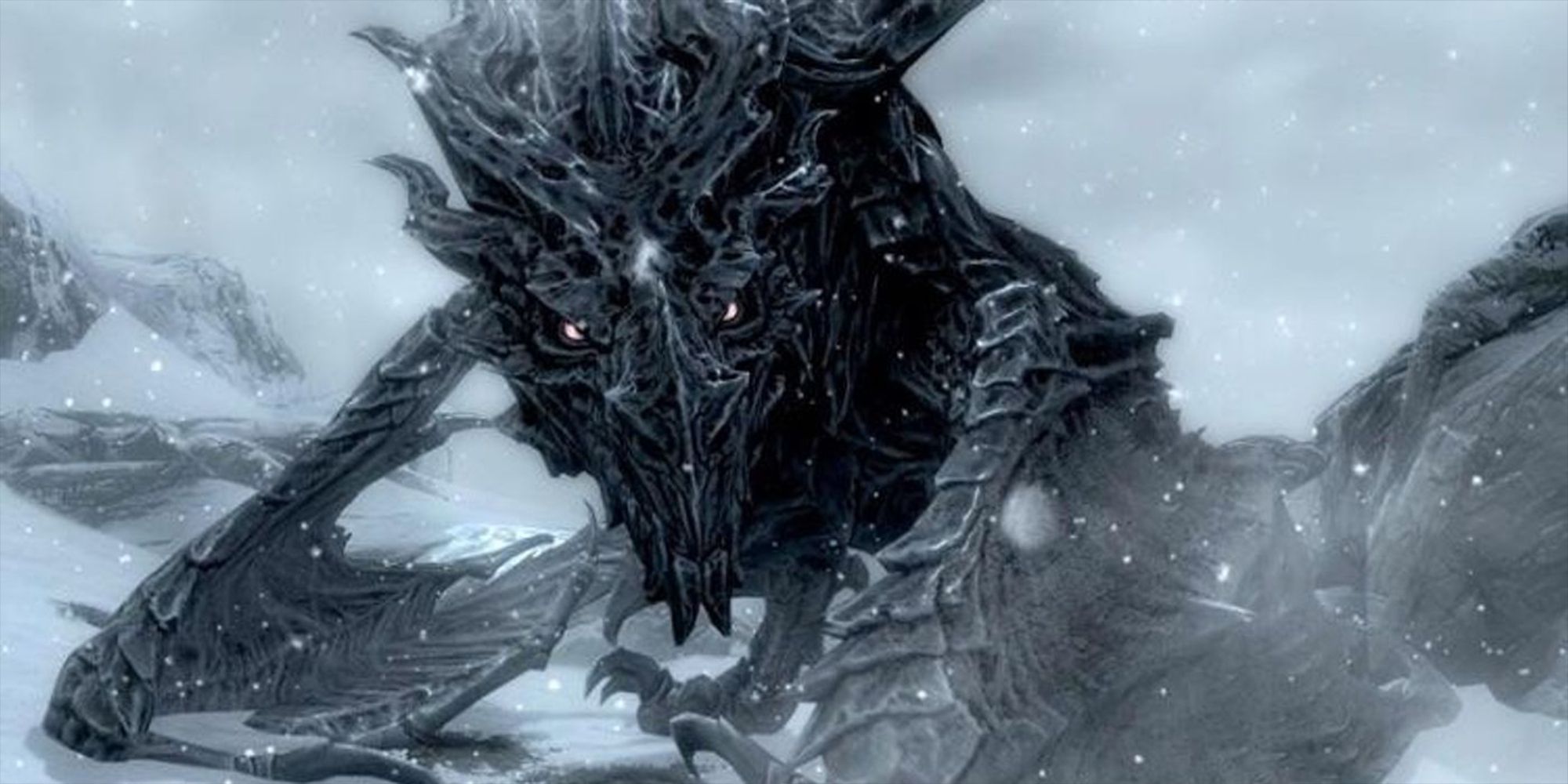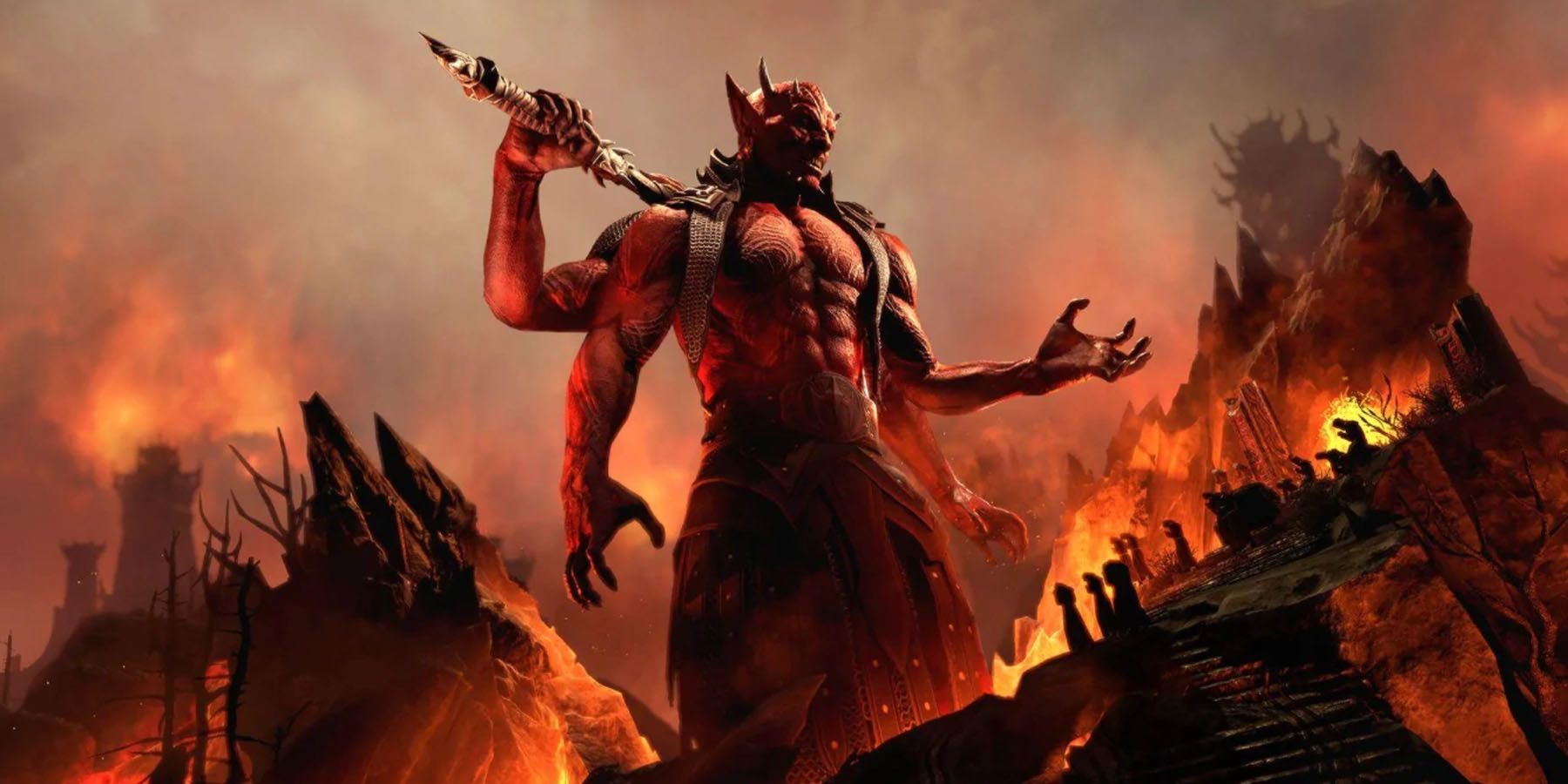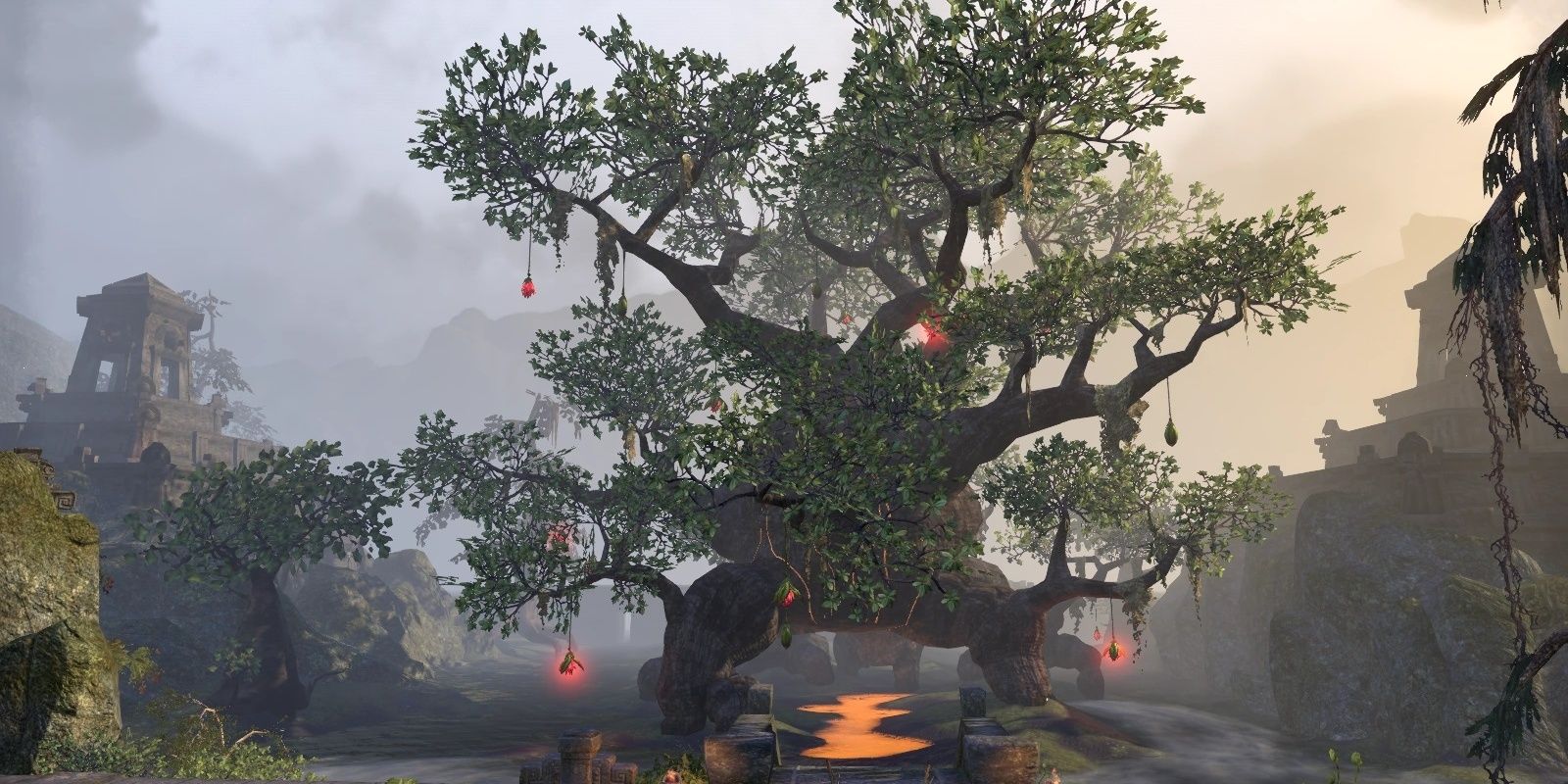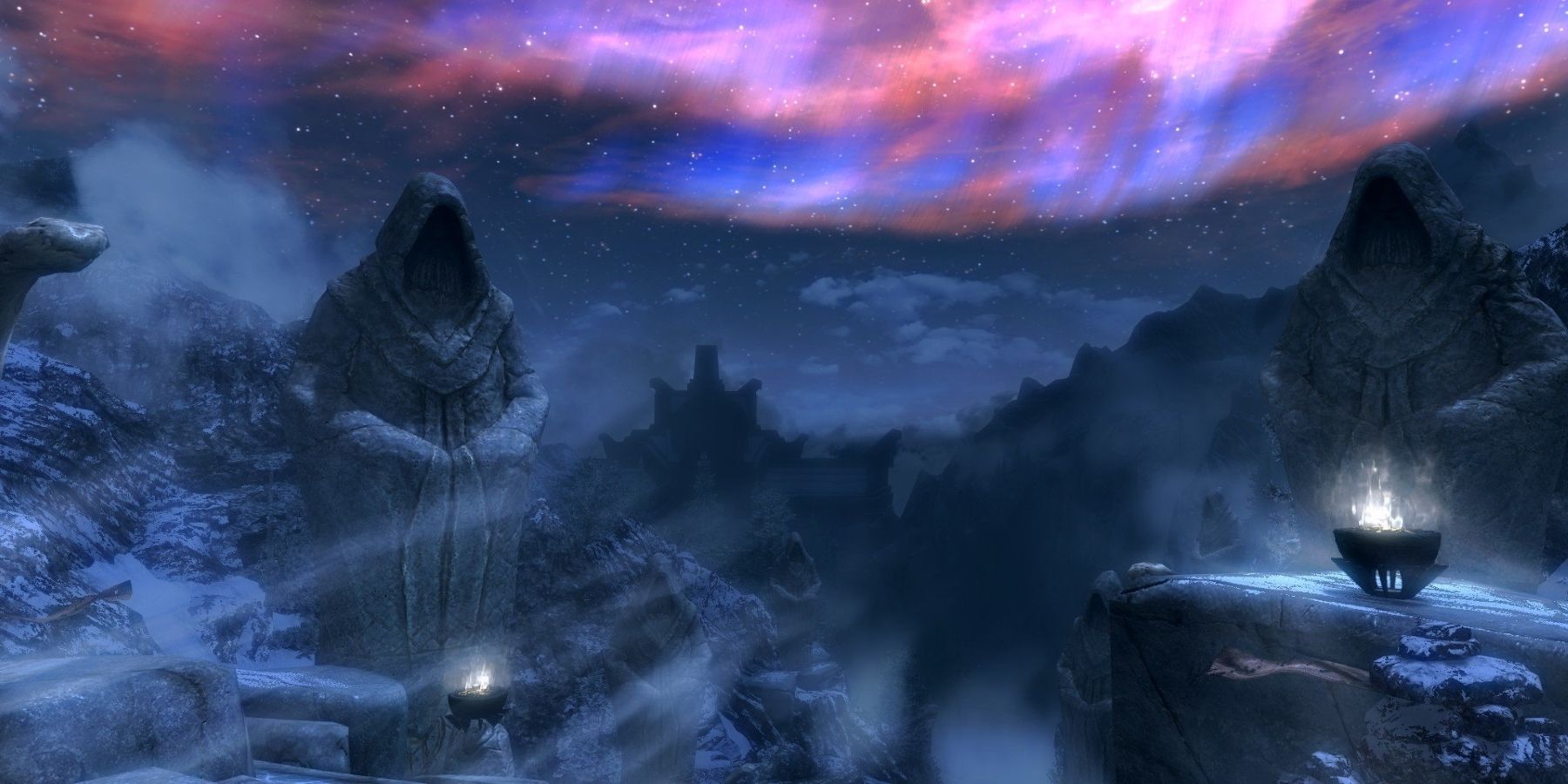Highlights
- The Elder Scrolls series features a diverse collection of gods and deities, each with their own fascinating histories and creation stories.
- Some gods, like Mannimarco and Reymon Ebonarm, fall outside the well-known pantheons of Daedric princes and Nine Divines.
- The lore of The Elder Scrolls includes powerful gods like Ruptga, Jyggalag, Baan Dar, Vivec, Alduin, Mehrunes Dagon, the Hist, and the Amaranth.
The Elder Scrolls series is home to a cosmology of a plethora of fascinating cultures, each with its own contradictory histories and creation stories. While there are some similarities and overlaps in the story of the gods, each culture includes deities that are as powerful as they are mind-bending.
Most players of Skyrim, Morrowind, or Oblivion will likely be familiar with the Daedric princes and the Nine Divines. However, several gods fall outside these pantheons with their rituals, practices, and benefits of worship. Some of these gods are more obscure than others.
10 Mannimarco, King Of Worms
The King of Worms shows the mortal races of Nirn that show-offs like Talos or Vivec aren't the only ones who can ascend to godhood. Mannimarco has left a long legacy on the face of Tamriel. In life, he wrestled control of the Cyrodiilic Empire and opened the way for Malog Bal's invasion (The Elder Scrolls Online). In death, by the time of The Elder Scrolls 2: Daggerfall, The Worm King had become a powerful lich.
Thanks to the player, he was transformed into his own plane of Oblivion (or a visible planet in the night sky, depending on the reading) called the Necromancer's Moon, the sign of which became useful for necromancers in their creation of black soul gems. A "Mannimarco" appeared in The Elder Scrolls 4: Oblivion. However, some theorize that this Mannimarco is an impostor or avatar of one of Nirn's most powerful mages, given his weakened state.
9 Reymon Ebonarm, Daedra Slayer
Those familiar with this god might imagine that his name would be more prominent in the land of Tamriel, being the patron deity of warriors and war. However, there has been no trace of his existence since the time of The Elder Scrolls 2: Daggerfall. He is said to always don ebony armor and a tower shield, ride a golden horse named War Master, and relish the act of slaying Daedra.
One fan theory suggests that the Ebony Warrior, the outlandishly strong fighter encountered in Skyrim when the player reaches the maximum level, could be a nod to Reymon Ebonarm. However, the Sovngarde-seeking Redguard doesn't exactly meet Ebonarm's description (long, red hair, golden beard, sword for a hand) or share his insatiable thirst for war.
8 Ruptga, Tall Papa
According to myth, Ruptga began life on the skin of a great, cosmic snake that would shed its skin ad infinitum, creating an eternal cycle. Ruptga learned to step out of the cycle by shuffling at a strange angle, eventually teaching other spirits to do so as well. Ruptga became popular and fathered many children, earning him the name "Tall Papa."
There are some similarities between Ruptga and Magnus, the elven god of magic, whose Eye of Magnus appeared in the College of Winterhold in Skyrim, as both had apprentices who would go on to create the new world (Nirn) by tricking spirits into giving up their power to do so. If The Elder Scrolls 6 does take place in Hammerfell, it will be interesting to see how Ruptga is depicted.
7 Jyggalag, The Daedric Prince Of Order
While most Elder Scrolls fans probably know him for his cheese-supping, head-lopping mad counterpart, Jyggalag represents everything the Daedric prince of madness is not: order, determination, and certainty. In a time long passed, Jyggalag was once one of the most powerful Daedric lords, so much so that the other princes feared his power and cursed him to live as Sheogorath.
However, at the end of The Elder Scrolls 4: Oblivion's final DLC, The Shivering Isles, the player is given the mantle of Sheogorath. As a result, Jyggalag is released from his curse, free to continue his machine-like conquest of the other realms.
6 Baan Dar, The Man Of A Thousand Faces
The origin of Baan Dar is largely unknown, but the name of the god of thieves is one used liberally across Elsweyr and Valenwood, home of the Khajiit and the Wood Elves, and, of course, the Thieves Guild. He has a special place among the Khajiit, who refer to him as the "Pariah" and view his "teachings" of trickery and rebelliousness as a way of life.
Baan Dar is known to have his own realm known as "Five Finger Dance," which resembles a desert oasis under a purple night sky. It is said to be home to the greatest party in the cosmos and can sometimes be seen from Nirn as a shooting star.
5 Vivec, The Warrior-Poet
The half-gold, half-ashen-skinned Vivec is the third member of the Tribunal, the three living gods in Morrowind. Their "autobiography," The 36 Teachings of Vivec, might be the most compelling lore in any video game (or other media) ever penned. Each book reads like a bizarre poem and recounts the life and lessons of the living god and is intended to legitimate this new god of duality.
Vivec's telling of the story is muddled with what seem to many to be outright lies, contradictions, and nonsense. However, Vivec is truly a powerful God in his own right, thanks to the exploitation of the Heart of Lorkhan and Dwarven tools, and given the "fake it 'till you make it" nature of the Elder Scrolls cosmology, may contain many elements of truth, especially in contradictions.
4 Alduin, The World Eater
While the peoples of Tamriel all have their creation myths and legends, Alduin remains a constant in many of them. His relationship with Akatosh, the dragon god of time, remains uncertain. Nords maintain that he is the firstborn of Akatosh, the time god, who also appears as a dragon.
Despite his depiction in Skyrim, Alduin may be the most powerful entity in the entire Elder Scrolls series, if not the most powerful dragon in video game history. If he had managed to eat enough afterlife spirits, he very much could have made good on his "world eater" title. According to Nordic legends, Alduin is said to have devoured the previous world to create the current one.
3 Mehrunes Dagon, Prince Of Destruction
The lord of energy, revolution, and ambition resides in the fiery, lava-filled realm seen prominently in The Elder Scrolls 4, known as the Deadlands. He has tried to conquer (or destroy) the mortal plane many times in Nirn's long history and, even when unsuccessful, left horrific world-wounds in his wake.
His worshipers believe that Nirn itself is actually a realm of Oblivion, and not just any realm, but Mehrunes Dagon's realm (which is why he is so intent on invading it). Rather than conquest, he sees his entry into Nirn as a return, a reclamation.
2 The Hist
Many TES fans may not realize that these Blackmarsh-native trees are gods at all. However, according to Argonian lore, Hist trees are the remnants of a sentient species from another world, one which existed before all the worlds were broken and put back together again to form the world in which the Elder Scrolls takes place.
Each Hist tree is telepathically linked. They have memories of a time before Nirn's creation, and their sap has magical transformative properties. For example, they are said to have created Argonians out of regular lizards. The Argonians regard Hist as the creators of all life, and their lives are intertwined (if not planned) around the worship of these trees.
1 The Amaranth (The Godhead)
This god is worshiped by scant few sentient beings in Nirn. However, it may be the most powerful in existence. To put it in simple terms, the Amaranth, also known as the Godhead, is the dreamer responsible for all creation. If the Amaranth ever woke, it would mean the end of dreams and the end of Nirn itself.
According to the lore, it is possible for a sentient being to become one with the Godhead through the realization that they are simply a dream, as it is believed that Tiber Septim, also known as Talos, did during his reign as emperor. Attempting to do so may also come at the cost of vanishing out of existence, as the Dwarves (Dwemer) experienced.

